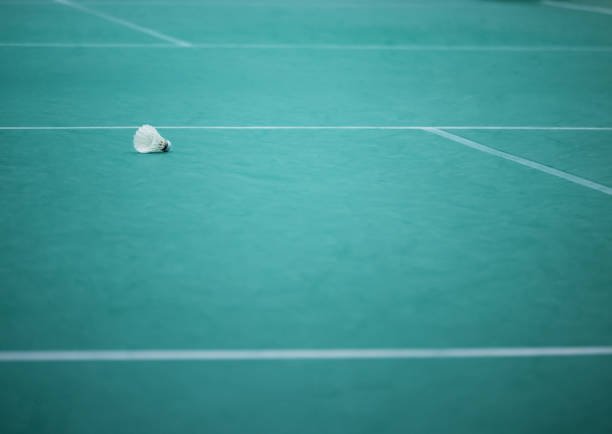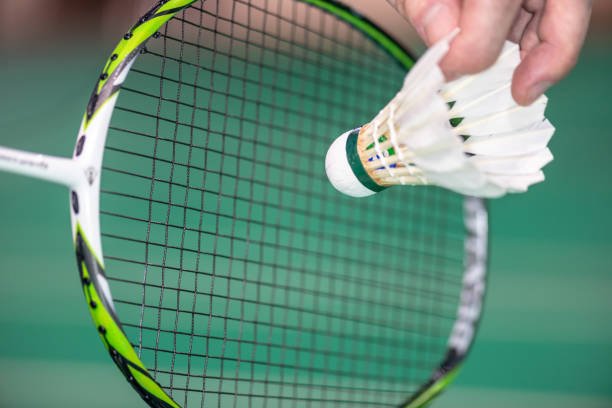The History and Evolution of Badminton

Badminton, as we know it today, is not the invention of a single individual, but rather the product of centuries of development, cultural exchange, and sporting evolution. The modern version of badminton evolved from a game played by British military officers stationed in India during the mid-19th century. The game, known as "Poona," was played with a shuttlecock and rackets, and these officers introduced a net into the game to create the version that we recognize today.
The name "badminton" came from the Duke of Beaufort, who promoted the sport in the 1870s at his country estate, Badminton House, in Gloucestershire, England. As a result, the sport was named after the estate, solidifying its place in British sporting history. Thus, the birth of badminton is a fusion of ancient games, British colonial influence in India, and the efforts of the Duke of Beaufort in popularizing the sport.
Badminton Rules

Badminton is a dynamic sport played between two players (singles) or two teams of two players each (doubles). The objective of the game is to hit the shuttlecock over the net and land it in the opponent's half of the court, while preventing the opponent from returning it. Points are awarded when the shuttlecock touches the ground on the opponent’s side or when the opponent fails to return it within the rules.
Scoring System
A typical badminton match consists of the best of three games, with each game played to 21 points. If the score reaches 20-20, the game continues until one player or team gains a two-point advantage. In the event that the score reaches 29-29, the next point wins the game. The match follows a rally point scoring system, where both the server and receiver have the opportunity to score a point on each rally, regardless of who served.
Players change ends after each game, and in the third game, they switch ends when the leading player or team reaches 11 points. The winner of the rally then serves.
Faults in Badminton
A fault can be called for various reasons, including:
- Touching the net: If the player’s body or racket touches the net during the rally, a fault is called.
- Out of bounds: If the shuttlecock lands outside the designated boundaries of the court.
- Double hit: When a player strikes the shuttlecock more than once in a single attempt to return it.
- Service fault: This occurs when the server does not follow the service rules, such as serving above the waist or failing to serve into the correct service court.
Badminton Equipment
Over the years, badminton equipment has evolved significantly, advancing from rudimentary wooden rackets and feathered shuttlecocks to high-performance gear made from modern materials like carbon fiber and durable synthetics. These improvements have greatly enhanced durability, performance, and overall game speed.
Evolution of the Shuttlecock
The shuttlecock, originally made of natural feathers and cork, has undergone a transformation to incorporate synthetic materials such as nylon, which has proven to be more durable, cost-effective, and consistent. Early shuttlecocks were vulnerable to weather conditions and wear, but modern synthetic shuttlecocks offer a more stable flight trajectory and are better suited to varying playing conditions, making them a more reliable option for recreational and competitive play alike.
Evolution of the Racket
Badminton rackets have evolved from their original wooden frames to lightweight, high-strength materials such as aluminum and carbon fiber. Early rackets were heavy and difficult to maneuver, limiting the players' ability to execute swift and powerful shots. Today’s rackets are designed for enhanced performance, with lightweight frames that allow for superior control, speed, and power.
Technological advances, such as the use of an isometric head shape and aerodynamically optimized frames, have also contributed to improving racket performance. These design innovations enable players to generate greater speed and precision with less effort.
Badminton Court and Net

Like the players' equipment, the badminton court and net have undergone considerable improvements. The standard court measures 13.4 meters (44 feet) in length and 6.1 meters (20 feet) in width for doubles play, and 5.18 meters (17 feet) in width for singles play. The net, which is placed at the center of the court, is 1.55 meters (5 feet) high at the center and slightly lower at the sides.
The net plays a critical role in the game, as it is the barrier that separates the two sides of the court. It must be taut, and it is typically made of nylon or polypropylene, materials that are lightweight yet durable. To ensure a more consistent playing experience, modern nets are often made with knotless designs, which improve durability and resist fraying over time. Many nets also feature a headband at the top, not only for aesthetic appeal but also to protect the net from wear and tear.
Some high-end nets also incorporate specialized materials such as Kevlar cables, which help maintain the net’s tension and prevent sagging over time. This ensures that the net remains in proper condition throughout the lifespan of the court.
Badminton Equipment for Competitive Play
At a professional level, badminton requires not only high-quality rackets and shuttlecocks, but also specialized shoes, clothing, and accessories. Badminton shoes are designed with specific features to enhance court grip, agility, and comfort during quick movements. They typically feature non-marking soles to prevent damage to indoor courts, and are designed to offer cushioning to support the player's joints during high-impact movements.
Badminton clothing, on the other hand, focuses on comfort, breathability, and flexibility, ensuring that players can move freely and stay cool during fast-paced rallies. Modern fabrics with moisture-wicking properties are commonly used to enhance performance.
Conclusion
The history of badminton is a testament to the dynamic evolution of sport. From its humble origins in ancient games and colonial India to its modern-day form as a fast-paced, competitive sport, badminton has undergone numerous changes. These improvements in equipment, rules, and playing techniques have made the sport more accessible and exciting for players at all levels. Today, badminton is played worldwide, with millions of enthusiasts enjoying the game in various formats, from casual backyard matches to the prestigious Badminton World Federation (BWF) tournaments.